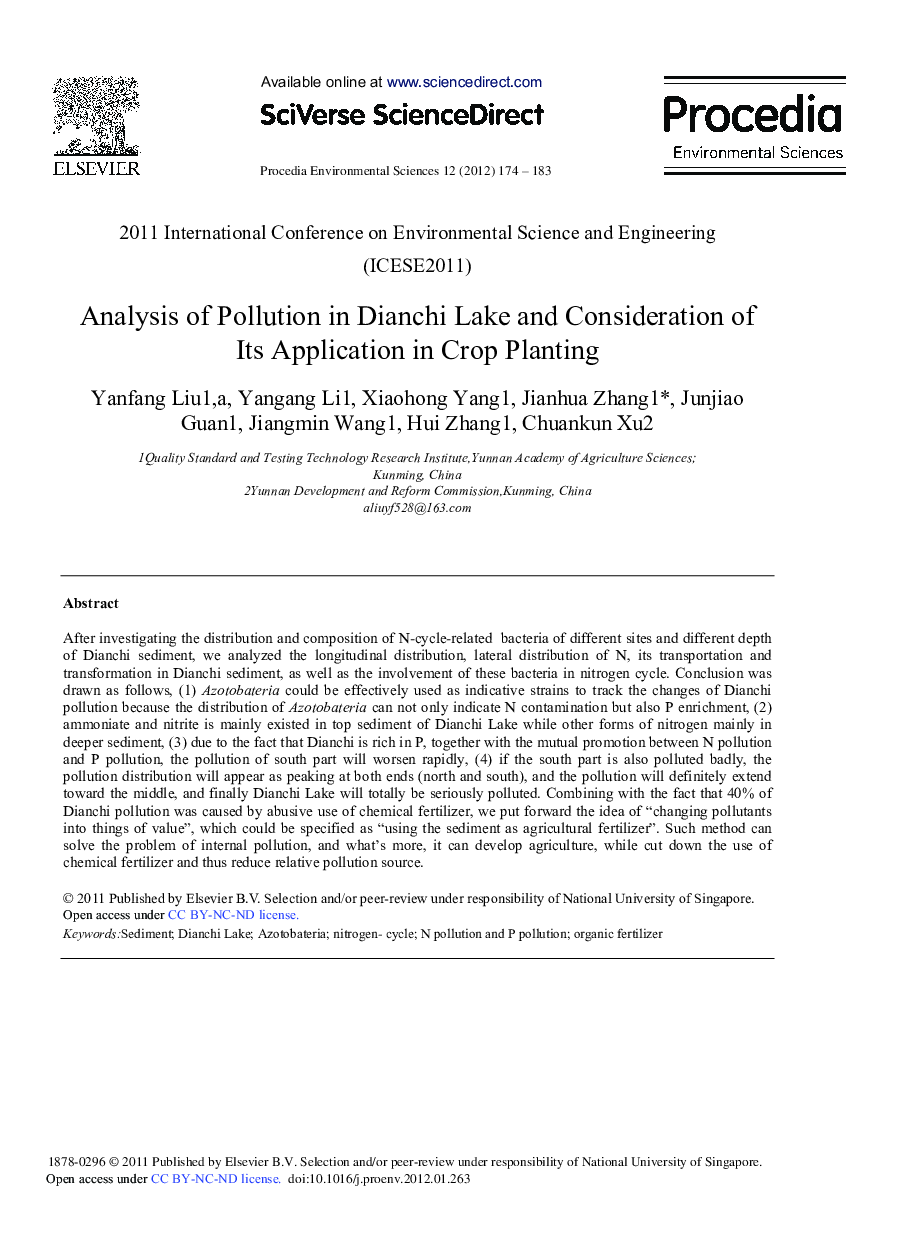| کد مقاله | کد نشریه | سال انتشار | مقاله انگلیسی | نسخه تمام متن |
|---|---|---|---|---|
| 4403145 | 1307126 | 2012 | 10 صفحه PDF | دانلود رایگان |

After investigating the distribution and composition of N-cycle-related bacteria of different sites and different depth of Dianchi sediment, we analyzed the longitudinal distribution, lateral distribution of N, its transportation and transformation in Dianchi sediment, as well as the involvement of these bacteria in nitrogen cycle. Conclusion was drawn as follows, (1) Azotobateria could be effectively used as indicative strains to track the changes of Dianchi pollution because the distribution of Azotobateria can not only indicate N contamination but also P enrichment, (2) ammoniate and nitrite is mainly existed in top sediment of Dianchi Lake while other forms of nitrogen mainly in deeper sediment, (3) due to the fact that Dianchi is rich in P, together with the mutual promotion between N pollution and P pollution, the pollution of south part will worsen rapidly, (4) if the south part is also polluted badly, the pollution distribution will appear as peaking at both ends (north and south), and the pollution will definitely extend toward the middle, and finally Dianchi Lake will totally be seriously polluted. Combining with the fact that 40% of Dianchi pollution was caused by abusive use of chemical fertilizer, we put forward the idea of “changing pollutants into things of value”, which could be specified as “using the sediment as agricultural fertilizer”. Such method can solve the problem of internal pollution, and what's more, it can develop agriculture, while cut down the use of chemical fertilizer and thus reduce relative pollution source.
Journal: Procedia Environmental Sciences - Volume 12, Part A, 2012, Pages 174-183